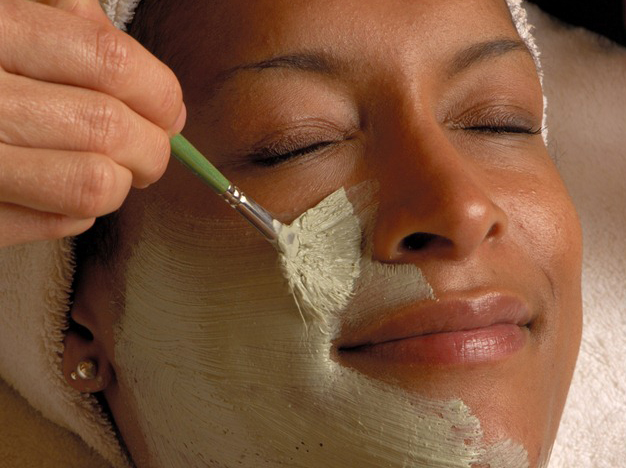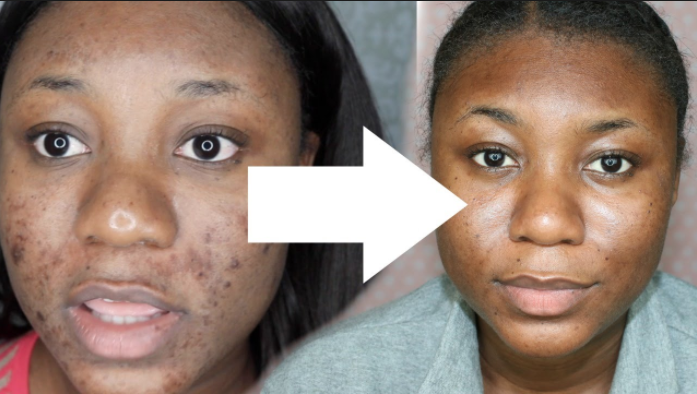Dermatologist advice: How to get rid of acne scars
If you’ve tackled a bout of acne and come out triumphant, it may feel like the battle has been won.
However, so many blemishes leave their mark on your skin long after the breakout has subsided. Raised scars and patches of pigmentation can linger for months – even years – but there are tactics you can employ to smooth your way back to bright, even skin.
Here, we ask the experts to reveal exactly how to get rid of acne scars and pigmentation as quickly (and safely) as possible.
What are acne scars?
A generalised term, acne scarring can be used to refer to a multitude of different marks that a breakout may leave behind. “Acne scars come in different forms, including rolling, boxcar and ice-pick scars,” explains Pamela Marshall, clinical aesthetician and founder of Mortar & Milk.
While most types of scarring can be treated via various methods, there is one subset that requires specialist treatment, as aesthetician and founder of West Room Aesthetics Dija Ayodele explains.
“Be wary that keloid scarring, which darker skin can be prone to, can make you contraindicated to treatment that works on the basis of inducing a mild trauma to the skin, such as chemical peels and microneedling.
“If you’ve got this type of scarring, it’s best to see a doctor or dermatologist that can provide steroid shots or advise on removing with surgery.”
Acne scars or hyperpigmentation?
Acne scarring and post-inflammatory hyperpigmentation can both occur after a breakout, but the two are actually very different – and thus a different approach is required when it comes to fading them.

“Acne scars occur when too much collagen forms in a particular spot when a wound is healing,” explains dermatologist Dr Dennis Gross. “The scar often develops within the dermis, where the original acne-caused inflammation formed.”
“When someone has cystic acne, there’s a higher probability of having rolling or boxcar scarring – especially if they are picked at before they are ready, or too aggressively,” says Marshall. Aesthetic practitioner and ambassador for Filorga, Dr Philippe Hamida-Pisal agrees. “Acne scarring is due to touching and squeezing spots. This damages small veins, glands and tissues surrounding the spots which creates scarring,” he says.
Unlike acne scarring, post-inflammatory hyperpigmentation is simply a form of skin pigmentation (like sun damage), which occurs as a result of trauma to the skin. As it doesn’t damage the follicle, it isn’t considered a true form of scarring.
According to Ayodele, certain skin types and tones are more likely to experience this post-acne redness. “Darker skin tones are more prone to hyperpigmentation because of the increased levels on the melanin in the skin. This means that whenever there is any trauma, the melanin cells quickly leap into action to produce more melanin to defend and protect against that trauma,” she says.
The good news is that when it comes to getting rid of both acne scars and pigmentation, there are myriad options available, from professional treatments to at-home hacks.
If you’re looking to diminish rolling, boxcar or ice-pick scarring, the solution likely lies in a salon. Post-inflammatory hyperpigmentation will fade on its own over time, but there are several options – both in-salon and at-home – that you can utilise to speed up the process.
How to get rid of acne scars
MICRONEEDLING

There are many treatments out there to help fade the various forms of acne scarring – including lasers and microdermabrasion – but Marshall’s preferred treatment is microneedling. “Performed by a professional, microneedling is probably the best for scarring, and also helps reduce the signs of ageing,” she explains. “By making micro-wounds in the skin, we are forcing it to produce new healthy collagen and elastin which reforms the skin.”
Ayodele agrees, adding that “the earlier this is done the better, as it’s much more challenging to treat old scars.”
PEELS
If your scars aren’t severe, don’t underestimate the power of the chemical peel. “For less obvious scarring, having a clinical treatment with a low-pH acid will make a big difference,” says Marshall.
What’s more, at-home peels have come a long way in recent years, and there are now plenty of excellent options that work on renewing the skin surface, reducing the depth and intensity of acne scarring. “To treat acne scars at home, use a product that offers gentle chemical exfoliation,” suggests Dr Gross.

How to get rid of post-inflammatory hyperpigmentation
VITAMIN C
When it comes to brightening dark hyperpigmentation, vitamin C should be a key weapon in your skincare arsenal.
“I absolutely love it for many reasons. Its benefits are endless, including revitalising and brightening the skin while stimulating your body’s natural production of collagen,” says Dr Gross. “Not only does it help to lighten and break-up pigmentation you might already have, but it also prevents dark spots or sun spots from forming in the future.”
ALPHA-HYDROXY-ACIDS
According to Ayodele, an acid peel is also a great way to fade post-inflammatory hyperpigmentation, as “it will help the skin to exfoliate quickly and fade the discolouration.” Alpha-hydroxy-acids such as glycolic, lactic and mandelic acid work by dissolving the ‘glue’ that holds dead skin cells together, revealing brighter, fresher skin beneath.
“On Black skin it’s best to do a series of superficial peels over a course of a few months as opposed to doing a single deep peel, which can cause further PIH,” says Ayodele. Consider a low-dose at-home product designed for sensitive skin, such as Dr. Dennis Gross’ Alpha Beta Universal Daily Peel (which, conversely, doesn’t need to be used every day), or QMS Medicosmetics’ Active Exfoliant 7% Sensitive.
RETINOL
“Retinol (vitamin A) is useful for acne as it controls the hyperpigmentation by increasing the cell turnover rates,” explains Dr Hamida-Pisnal. “This renewal will help to reduce post-inflammatory hyperpigmentation.”
A course of prescription-strength retinol requires a trip to the dermatologist, but there are now several excellent over-the-counter brands working with vitamin A derivatives, such as Medik8 and La Roche-Posay. As always when it comes to active skincare, follow the instructions stringently, and consult a doctor if in doubt.
LED LIGHT THERAPY
Light therapy has been shown to work on so many skin concerns, from loss of collagen to active breakouts, and recent research suggests that red LED, in particular, may help to reduce inflammation and prompt cellular repair, aiding the skin to recover from a breakout more effectively.
Where such therapies were once confined to the four walls of a dermatologist’s office, a handful of brands have now harnessed this advanced technology in at-home masks and hand-held gadgets. Look for one with a red-light setting (the majority have this), and use it regularly for cumulative results.



